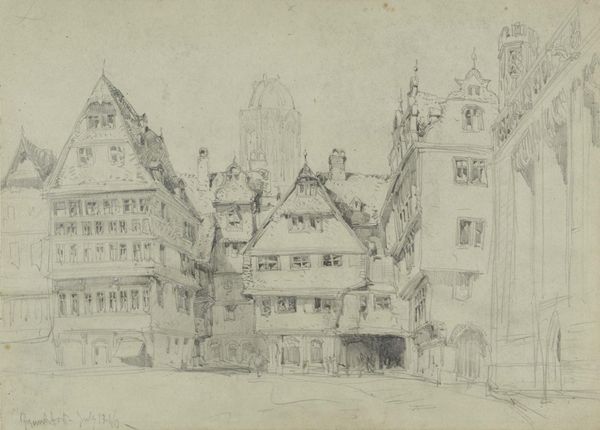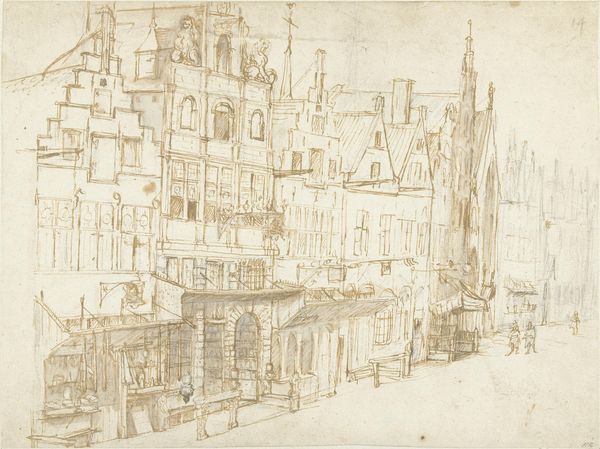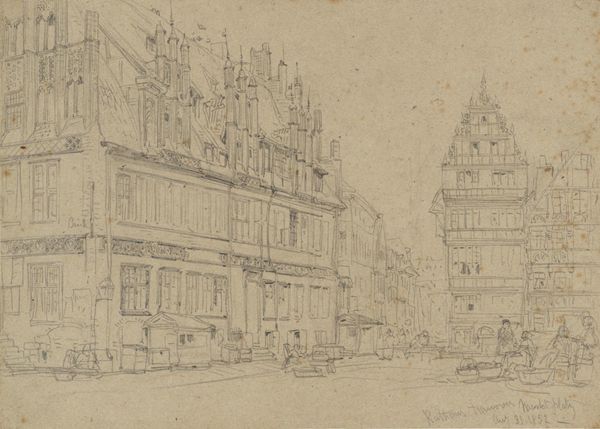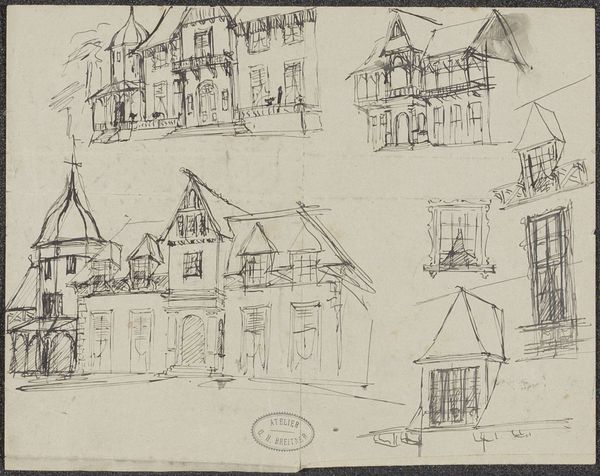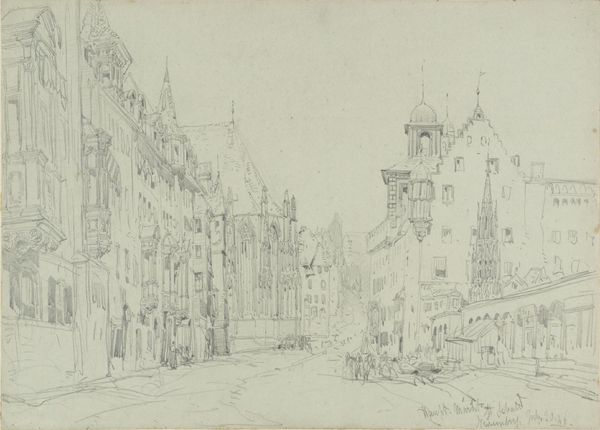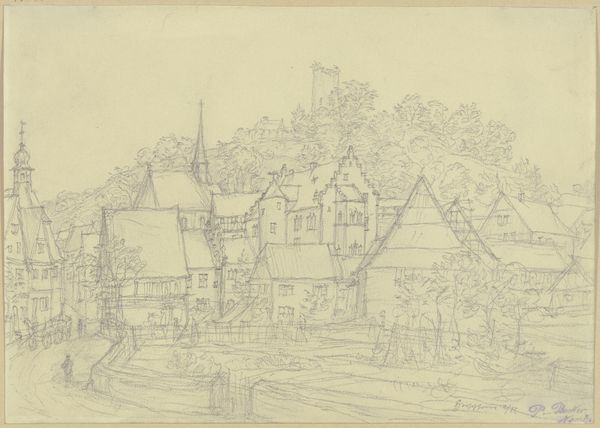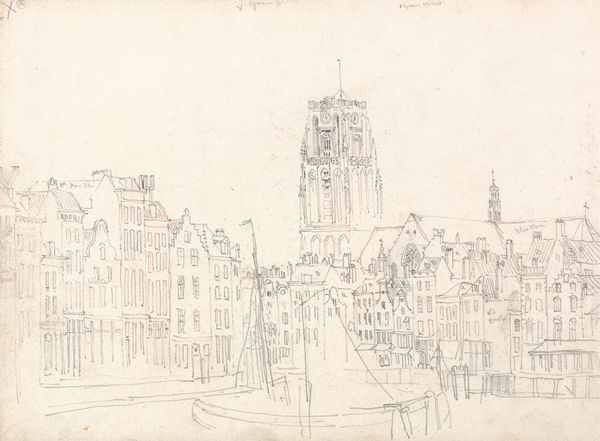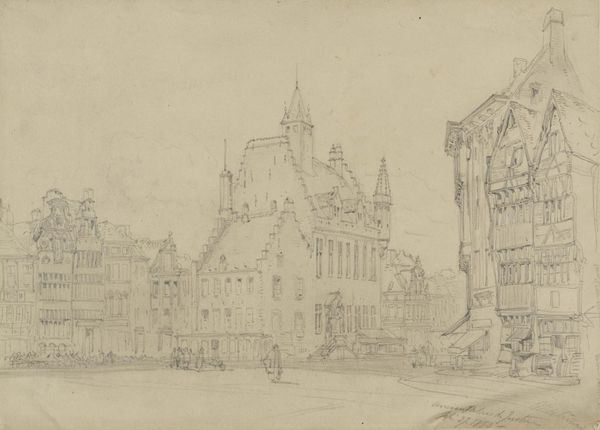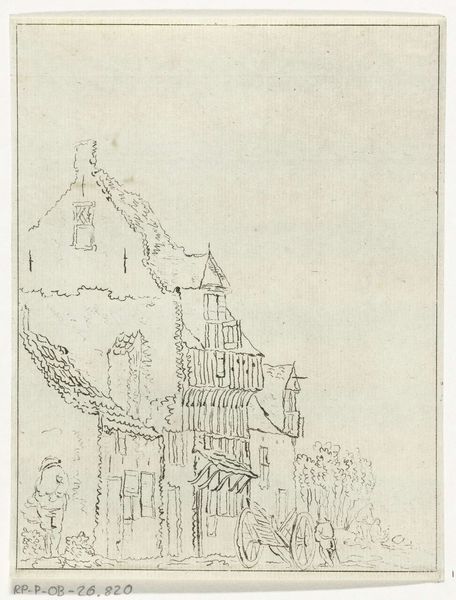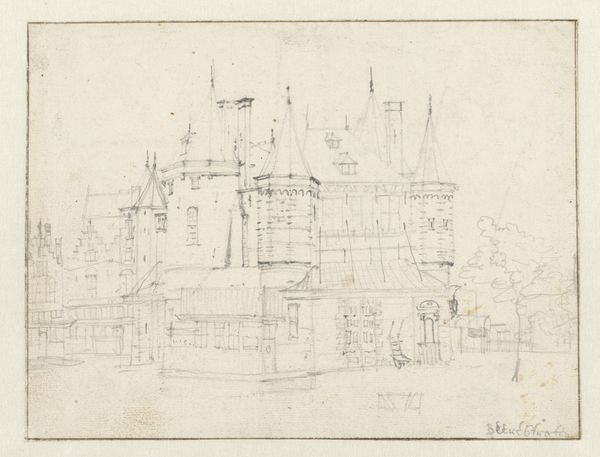
Dimensions: support: 248 x 346 mm
Copyright: CC-BY-NC-ND 4.0 DEED, Photo: Tate
Editor: This is William Callow's "Giessen," a pencil drawing from the Tate Collections. It’s interesting how the buildings seem almost to lean into the street. What strikes you about this piece? Curator: The raw materiality of the pencil on paper is fascinating. Consider Callow's labor; each stroke defines not only form but also the social fabric of this town. How does the depiction of commerce—note the signs—intersect with the aesthetic value we assign to it? Editor: So, you're saying the drawing's value isn't just in its artistic skill, but also in what it tells us about the economy and daily life of the time? Curator: Precisely. It's a document of production and consumption, presented through the lens of artistic creation. This approach challenges the traditional separation of "high art" and the everyday grind. Editor: That’s a very different way of seeing art. I’ll have to keep that in mind. Curator: Indeed, it exposes the means of art-making and its connection to the world around us.

